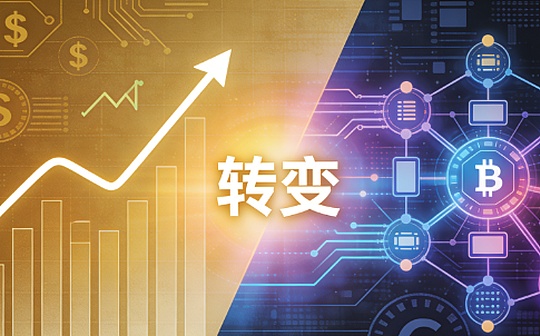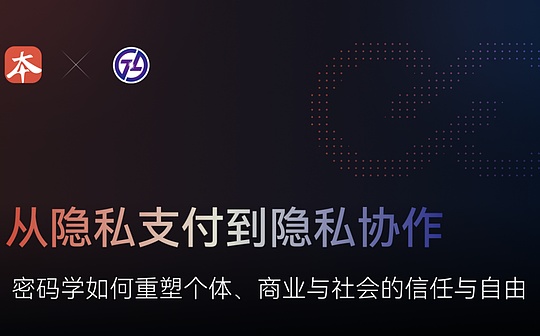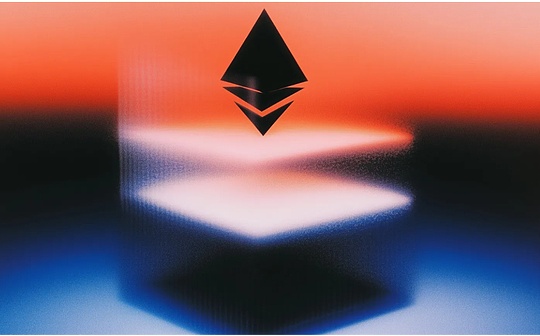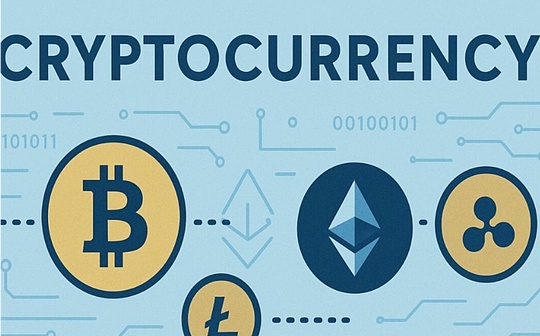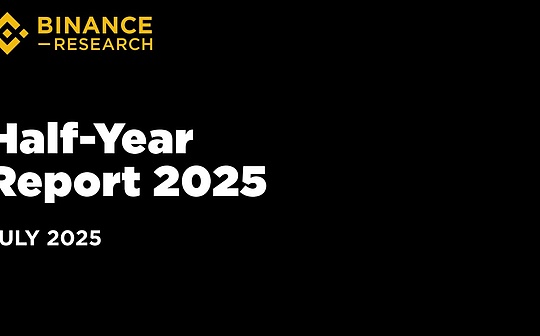
Authors: Moulik Nagesh, Joshua Wong, Michael JJ, Asher Lin Jiayong
Binance Research Institute released its crypto industry research report for the first half of 2025.The report shows that the crypto market showed moderate growth in the first half of 2025, with a total market value increasing by 1.99% since the beginning of the year.Among them, the market fell 18.61% in the first quarter and rebounded 25.32% in the second quarter.Bitcoin’s performance highlights its maturity as a key macro asset and institutional investment target, with a market value of more than $2 trillion and a market share of up to 65.1%, the highest level in more than four years. Even with the macro market fluctuations, BTC is still one of the best-performing assets in the world, with strong returns from the beginning of the year to the present.The total locked position in the DeFi field was stable at about US$151.5 billion, with monthly active users increasing by 240% year-on-year, and the DEX spot trading volume accounted for a new high of 29%, indicating strong user growth and structural changes in market share.The stablecoin sector has grown significantly, with a total market value of over US$250 billion hitting a record high, USDT remains dominant, USDC supply almost doubled, and market share has increased to more than 25%.
The following are the key points of the report.
1. Following a significant increase of 96.2% in 2024,The cryptocurrency market showed moderate growth in the first half of 2025, with the total market value rising by 1.99%.The market fell 18.61% in the first quarter and then rebounded 25.32% in the second quarter, causing a slight increase overall in the first half of 2025.In the first half of 2025, the market faced huge fluctuations due to tariff announcements and escalation of geopolitical tensions.
2.In the first half of 2025, major economies and their central banks took a completely different path to create a turbulent but opportunity-filled environment for crypto assets.The global landscape is characterized by a gradual slowdown in the U.S. economy and inflation are unexpectedly easing, while China’s GDP grew by 5.4% year-on-year in the first quarter, exceeding expectations, reflecting the positive impact of its stimulus measures.This economic differentiation was further exacerbated by a surge in liquidity, with the combined increase of $5.5 trillion in money supply in the United States, China, Europe and Japan — the largest six-month increase in four years — largely thanks to monetary easing outside the Federal Reserve, which has toughly suspended interest rate hikes.The intense geopolitical situation exacerbated the complexity of the situation, with the most prominent being the brief but fierce Sino-US trade war, which pushed tariff rates to an astonishing 145% before finally lowering it.In this turbulent environment, Bitcoin exhibits its evolving nature: It no longer acts like a “safe haven” but is more like a high beta asset, but has achieved an impressive +13% return so far this year, outperforming most traditional stock indexes.We believe that Bitcoin’s price cycle is the leading indicator of the global manufacturing cycle for 8 to 12 months, which means that there may be more opportunities in the second half of 2025.
3.Bitcoin’s performance in the first half of 2025 reflects its continued maturity as a key macro asset and institutional investor.With its peak of market capitalization at over $2 trillion and its cryptocurrency market dominance at 65.1% (the highest level in more than four years), Bitcoin remains one of the best performing assets in the world, delivering strong double-digit returns year-to-date even in the context of macroeconomic volatility.Spot Bitcoin ETFs have become a key structural driver, attracting continuous inflow of institutional funds and significantly reshaping the market structure.As the regulatory clarity and favorable accounting standards strengthen confidence, corporate adoption has also increased significantly, with more than 140 companies holding 848,100 bitcoins.At the same time, Bitcoin’s economic model is constantly evolving: native expansion solutions have made significant progress.Bitcoin DeFi (BTCFi) remains a strong on-chain use case – Total locked value (TVL) still grows by more than 550% year-on-year——Although speculation in on-chain token standards has declined.Despite the reduced base chain activity and transaction fees, cybersecurity and hash rates remain strong, highlighting Bitcoin’s cyber resilience.
4.The main layer 1 (L1) protocols show a very different growth path: Despite price pressure,Ethereum remains dominant, which is thanks to strong institutional inflows, successful upgrades to projects such as Pectra and leading developer activities.Solana maintained high transaction throughput before Firedancer went online, with growing interest from institutional investors and improving network reliability.BNB Chain’s Decentralized Exchange (DEX) hits a record high, expanding its business to performance upgrades such as memecoin, real-world assets (RWA), AI applications, and Pascal and Maxwell.At the same time, Avalanche accelerates the adoption of enterprise subnets.Sui’s total decentralized finance (DeFi) locked positions (TVL) and stablecoin traffic more than doubled, Tron consolidates its position as a key stablecoin settlement layer, while TON deepens its strategic integration with Telegram.
5.For Ethereum Layer 2 (L2s), the first half of 2025 marks a more subtle cycle.Signs of market saturation, different growth paths, increasingly intense modular competition and the “block fee arms race” all test the durability of liquidity, especially as debates over Ethereum’s underlying value capture are intensifying.Optimistic Rollup maintains its liquidity leadership and user share, Base and Arbitrum stand out in sustainable fee generation, while ZK Rollup has made real technological advances in prover cost, but remains behind in total lock-in value (TVL) and user stickiness.However, the continued fragmentation and uneven progress in sequencer decentralization and Stage 2 readiness have left the long-term maturity of L2s in an uncertain state.Even though Ethereum upgrades such as Fusaka and PeerDAS drive scalability, L2s must now prove that they can achieve sustainable economic benefits (without over-reliance on incentives) and reliable decentralization.
6.The DeFi sector has shown significant maturity and resilience, with growth momentums shifting from internal speculation to integration of institutional applications and risk-weighted assets (RWA).Total locked value (TVL) was stable at about $151.5 billion, with monthly active users up 240% year-on-year, and DEX’s spot trading volume hit an all-time high of 29%, indicating strong user growth and a structural shift in market share.During this period, restaking (restaking), led by EigenLayer, became an important cornerstone of the ecosystem, while forecast markets made breakthroughs through Polymarket’s partnership with social media giant X.Overall, DeFi is transitioning to a stage of sustainable growth supported by real-world value, but still faces severe systemic risks and security challenges.
7.In the first half of 2025, the stablecoin industry experienced significant growth, with a total market value exceeding US$250 billion, setting a record high.Tether (USDT) maintains its dominance with a market capitalization of $153-156 billion, while Circle’s USDC is the fastest growing stablecoin, with supply almost doubled to about $61.5 billion and market share also increased from 20% to more than 25%.On-chain activity has also surged, with adjusted stablecoin transactions on major blockchains exceeding $7 trillion, led by Tron, Ethereum and Solana.Regulatory clarity plays a key role in boosting institutional confidence—most notably the GENIUS Act passed by the U.S. Senate and the MiCA Rules implemented by the EU——This makes stablecoins an increasingly recognized payment, remittance and on-chain settlement tool.Overall, the first half of 2025 marked a turning point in the evolution of stablecoins from crypto-native technologies to mainstream financial infrastructure.
8.In the first half of 2025, the development trajectory of cryptocurrencies showed an increasingly differentiated trend – institutional users accelerated adoption through regulatory clarity and the integration of stablecoins, while the consumer level remains a crucial frontier of innovation, although this innovation is even more confusing.On-chain activity is increasingly influenced by products that prioritize usability, culture and immediacy: wallets become “super apps”, DeFi is integrated with fiat currency new banking, casual games and meme coins attract mainstream attention.Although consumer cryptocurrencies are often obscured by institutional narratives, it remains a space to test new behaviors, create cultural moments, and build user channels.As infrastructure matures, maintaining consumer momentum through intuitive products, low-friction entry and emotionally resonant experiences is crucial to ensuring that the long-term prospects of cryptocurrencies can extend from the financial sector to everyday life.
9.The integration of decentralized technology with artificial intelligence and real-world infrastructure is driving a new wave of innovation in the entire blockchain ecosystem.Decentralized Financial Artificial Intelligence (DeFAI) is becoming a key advancement, embedding autonomous AI agents into DeFi protocols to optimize transactions, lending and governance in real time.Meanwhile, the Decentralized Physical Infrastructure Network (DePIN) extends the blockchain’s tentacles to the areas of risk assets (RWA) and services by enabling decentralized ownership and management of physical infrastructure, thereby supporting the development of decentralized physical artificial intelligence (DePAI) and decentralized science (DeSci).In general, these interconnected areas represent a paradigm shift, namely, a digital economy that is transformed to a decentralized, artificial intelligence-driven, community governance, connecting the virtual world and the real world.
10.In 2025, the blockchain and cryptocurrency ecosystems have reached new maturity, characterized by the technology being adopted by enterprises of all sizes (from Fortune 500 to SMEs) and institutional investors are full of confidence.This wide range of applications is driving innovation and expanding use cases beyond retail transactions, including supply chain transparency, cross-border payments, DeFi integration, digital identity, and tokenization of risk-weighted assets (RWA).
11. DonaldAfter Trump took office as president, the global cryptocurrency regulatory landscape has undergone significant changes, and the United States has taken strategic measures that are beneficial to cryptocurrencies.at the same time,Europe is implementing stricter cryptocurrency enforcement measures, while the regulatory environment in Asia is very different:Hong Kong promotes innovation through open licensing and tax incentives, while Singapore implements strict compliance measures, thereby promoting industry migration.Global efforts to regulate tax transparency and strengthen cross-border regulatory cooperation have also made progress.
12. Looking forward to the second half of 2025, we are particularly excited about the top ten key themes.We expect significant progress in these areas throughout the year.These topics cover different perspectives and areas, such as those related to the macro environment, policies and regulations, Bitcoin ecosystem, stablecoins, risk-weighted assets (RWA), and more.

